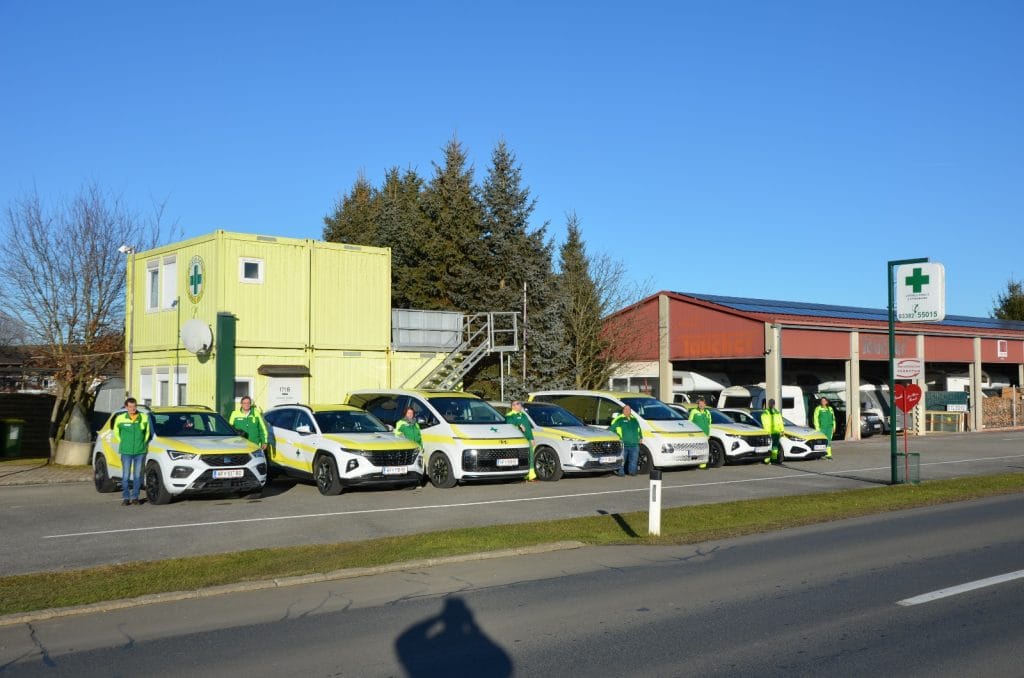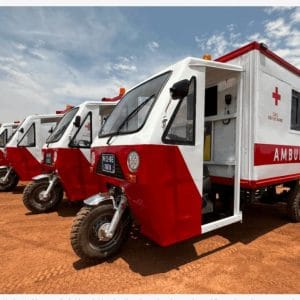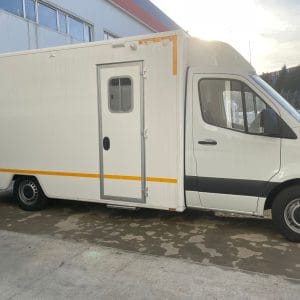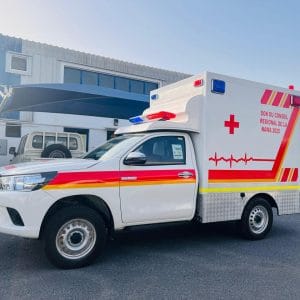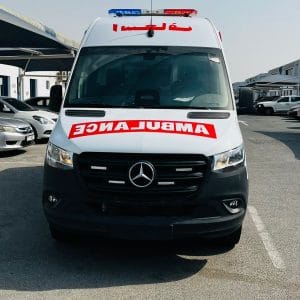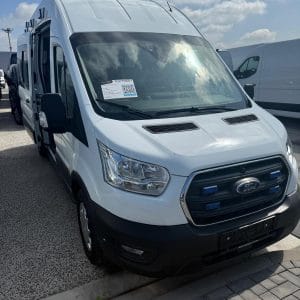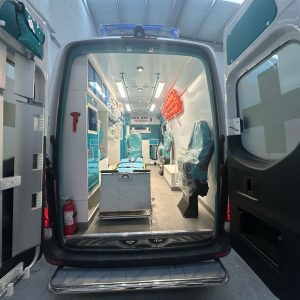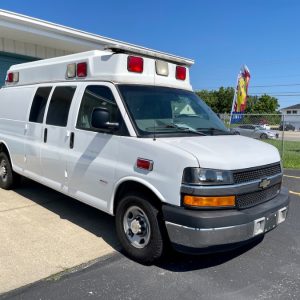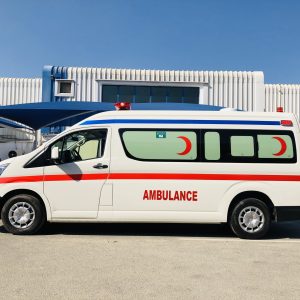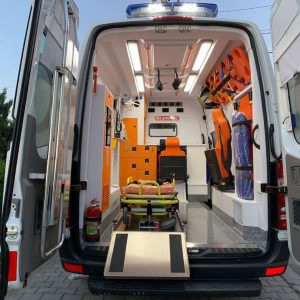Introduction: A New Vision for Emergency Response
Hyundai Staria Ambulance; In the high-stakes world of emergency medical services (EMS), the vehicle is more than just transport; it’s a mobile clinic, a sanctuary for the vulnerable, and a crucial tool for first responders. The arrival of the Hyundai Staria marked a seismic shift in van design, with its futuristic aesthetics and advanced platform. But it takes a specialist to transform this innovative people-mover into a life-saving machine. Enter ICU Automotive, a premier ambulance manufacturer renowned for its precision engineering and patient-centric designs. This deep dive explores the powerful synergy between Hyundai’s groundbreaking platform and ICU Automotive’s expertise, resulting in the exceptional Hyundai Staria Ambulance.
Who is ICU Automotive? The Specialist Behind the Conversion
Before we examine the vehicle itself, it’s essential to understand the craftsmen behind the conversion. ICU Automotive is not a generic modifier but a dedicated specialist in the emergency vehicle sector. With a reputation built on reliability, innovation, and stringent quality control, they have earned the trust of EMS providers by understanding the unique demands of pre-hospital care.
Their process involves more than just installing lights and a stretcher. It encompasses:
- Purpose-Built Engineering: Designing interiors from the ground up for workflow efficiency and patient safety.
- Rigorous Testing: Ensuring every converted vehicle meets or exceeds national ambulance standards for build quality, electrical safety, and road handling.
- Attention to Detail: From the placement of oxygen outlets to the choice of anti-microbial surfaces, every element is meticulously planned.
This expertise makes them the ideal partner to harness the full potential of the Hyundai Staria for critical care applications.
The Hyundai Staria Platform: A Blank Canvas for Innovation
The standard Hyundai Staria itself is a revolutionary vehicle, and its design philosophy aligns perfectly with the needs of a modern ambulance.
1. Unparalleled Space and Accessibility:
The Staria’s most significant advantage is its monolithic, space-efficient design. With a low, flat floor and an exceptionally wide and tall cabin, it provides an unrivaled working environment for paramedics. The iconic panoramic front windscreen and large side windows create a bright, less claustrophobic environment for both crew and patients. Crucially, the low step-in height and wide sliding doors facilitate rapid and safe patient loading, which is critical in emergency situations.
2. Advanced Safety Foundation:
Hyundai equipped the Staria with a comprehensive suite of advanced driver-assistance systems (ADAS), known as Hyundai SmartSense. This includes:
- Forward Collision-Avoidance Assist (FCA)
- Lane Keeping Assist (LKA)
- Smart Cruise Control (SCC)
- Blind-Spot Collision-Avoidance Assist (BCA)
For an ambulance driver navigating traffic under pressure, these systems provide an essential layer of active safety, helping to prevent accidents before they happen.
3. Powerful and Efficient Powertrain:
The Staria is typically powered by a modern 2.2-liter turbo-diesel engine, offering a robust blend of power and torque necessary for carrying heavy medical equipment and responding to calls without hesitation. This engine is paired with a smooth-shifting automatic transmission, ensuring a stable and comfortable ride for the patient in the rear.
The Transformation: Inside the ICU Automotive Hyundai Staria Ambulance
This is where ICU Automotive’s magic happens. They take Hyundai’s excellent platform and meticulously engineer it into a fully-functional intensive care unit on wheels.
A. The Driver and Crew Cabin:
The front cabin is largely retained from the standard Staria, benefiting from its user-friendly technology, excellent visibility, and comfortable seating. ICU Automotive integrates the emergency control systems—for lights, sirens, and communications—seamlessly into the dashboard, ensuring they are easily accessible without distracting the driver.
B. The Patient Compartment: A Hub of Medical Technology:
The rear compartment is where the transformation is most profound. ICU Automotive designs a modular interior tailored to the specific needs of the client, whether for basic life support (BLS) or advanced life support (ALS). Key features include:
- Ergonomic Layout: Everything is within arm’s reach of the attending medic. The primary bench seat is strategically positioned opposite the patient stretcher, allowing for unimpeded access during procedures.
- Medical Racking and Storage: Custom-made, shock-absorbent cabinets securely house vital equipment like defibrillators, ventilators, and suction units. These are designed to remain locked even during sudden maneuvers.
- Electrical System: A sophisticated dual-battery system is installed. This ensures that all medical equipment can run independently of the vehicle’s engine, preventing the risk of draining the starter battery. Multiple 12V, USB, and 230V power outlets are installed throughout the cabin.
- Climate Control: A dedicated auxiliary heating and cooling system for the patient compartment is essential. It allows medics to maintain a precise temperature for patient comfort, independent of the front cabin’s climate settings.
- Lighting: A combination of bright, shadowless LED lights for medical procedures and dimmable ambient lighting for patient comfort is standard.
- High-Quality Materials: All surfaces are lined with easy-to-clean, anti-bacterial materials that can withstand rigorous decontamination processes.
C. Safety and Compliance:
ICU Automotive builds the Staria Ambulance to comply with the highest industry standards. The patient stretcher is anchored using a robust locking system that meets strict crash safety regulations. The entire conversion is undertaken with a focus on maintaining the vehicle’s structural integrity and low center of gravity, ensuring stable and safe handling.
Why Choose the Hyundai Staria Ambulance by ICU Automotive?
When EMS providers evaluate their fleet options, the Staria Ambulance by ICU Automotive presents a compelling case.
- Enhanced Patient Experience: The spacious, light-filled interior reduces anxiety for patients, which can be beneficial for their condition. The smooth ride quality also contributes to a more comfortable transport.
- Improved Crew Efficiency and Wellbeing: An ergonomic layout reduces physical strain and fatigue for paramedics, allowing them to focus on patient care. The excellent driving dynamics and safety features also reduce driver stress.
- Operational Reliability: Built on Hyundai’s global platform known for its durability and backed by ICU Automotive’s specialist craftsmanship, these ambulances are designed for high-uptime and demanding duty cycles.
- Modern Image: The Staria’s striking appearance projects a modern, professional, and trustworthy image for any EMS organization.
Applications and Versatility
The Hyundai Staria Ambulance by ICU Automotive is incredibly versatile. It is ideally suited for:
- Emergency 911 Response: As a rapid-response unit for both urban and rural settings.
- Patient Transfer Services: For non-emergency but medically supervised transports between hospitals or care facilities.
- Critical Care Transport: Configurable to support the complex equipment needed for inter-hospital transfers of critically ill patients.
Conclusion: The Future of EMS is Here
The partnership between Hyundai’s innovative Staria and the specialist engineering of ICU Automotive has created more than just an ambulance; it has created a new benchmark for the industry. It successfully merges cutting-edge automotive design with the practical, life-saving needs of emergency medical services. For fleet managers, paramedics, and, most importantly, the patients they serve, the Hyundai Staria Ambulance represents a significant leap forward—proving that the vehicle of care can itself be a form of care.
By choosing a conversion from a reputable ambulance manufacturer like ICU Automotive, EMS providers are not just purchasing a vehicle; they are investing in a safer, more efficient, and more compassionate future for emergency response.


